The doctors trekking the Himalayas to vaccinate its remote villages
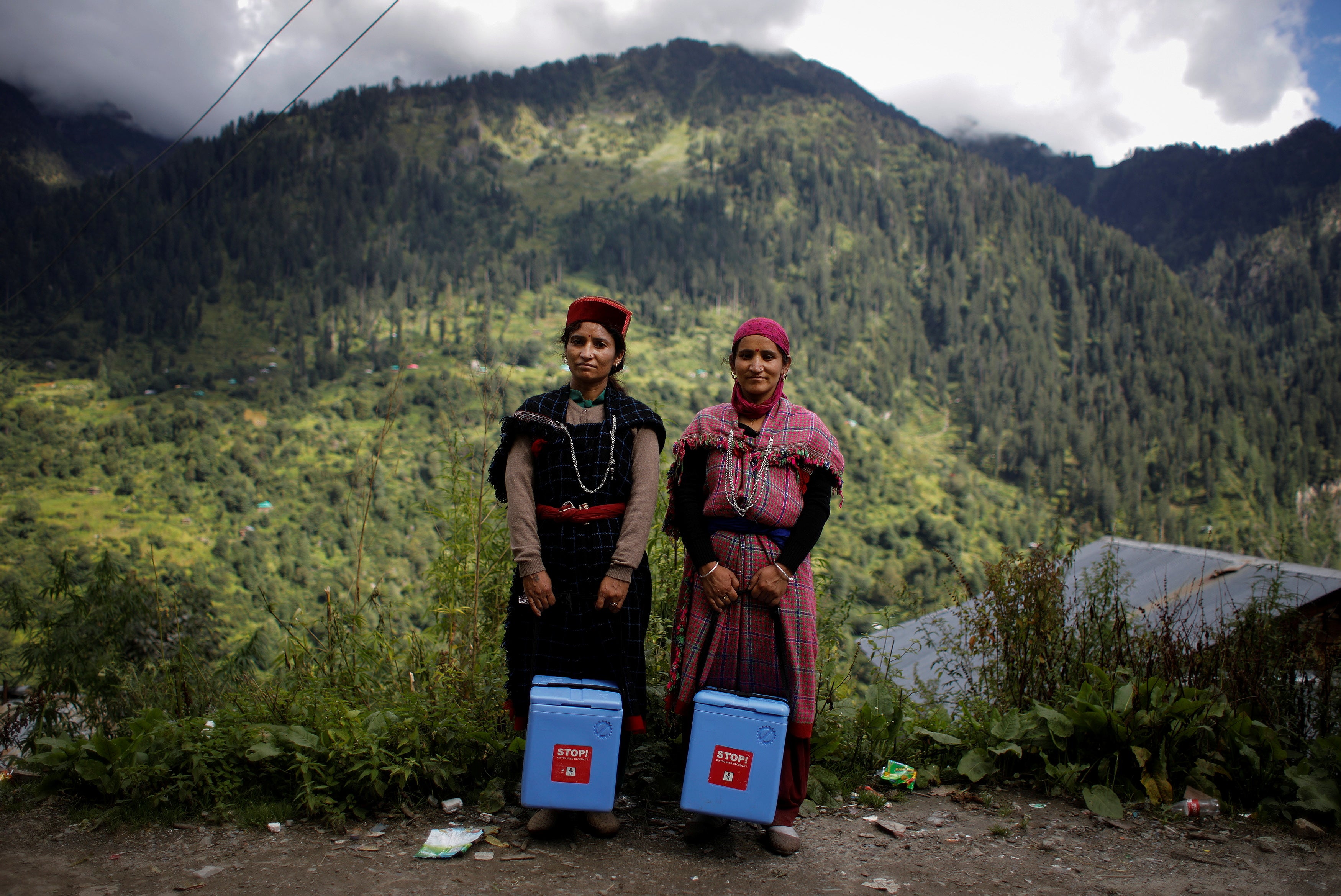
Your support helps us to tell the story
From reproductive rights to climate change to Big Tech, The Independent is on the ground when the story is developing. Whether it's investigating the financials of Elon Musk's pro-Trump PAC or producing our latest documentary, 'The A Word', which shines a light on the American women fighting for reproductive rights, we know how important it is to parse out the facts from the messaging.
At such a critical moment in US history, we need reporters on the ground. Your donation allows us to keep sending journalists to speak to both sides of the story.
The Independent is trusted by Americans across the entire political spectrum. And unlike many other quality news outlets, we choose not to lock Americans out of our reporting and analysis with paywalls. We believe quality journalism should be available to everyone, paid for by those who can afford it.
Your support makes all the difference.To visit the Indian village of Malana deep in the Himalayas, a Covid-19 vaccination team scrambled over a landslide that blocked the road the day before, scaled a retaining wall and then began a three-hour trek down and up a river valley.
Despite the hostile terrain, the northern state of Himachal Pradesh, where Malana is located, earlier this month became the first in India to administer at least one Covid-19 vaccine dose in all its adults.
The steep topography was one challenge overcome by health workers walking for hours or days to reach remote villages and another was religious beliefs, as the tourism-dependent state strived to immunise its approximately five million adults.
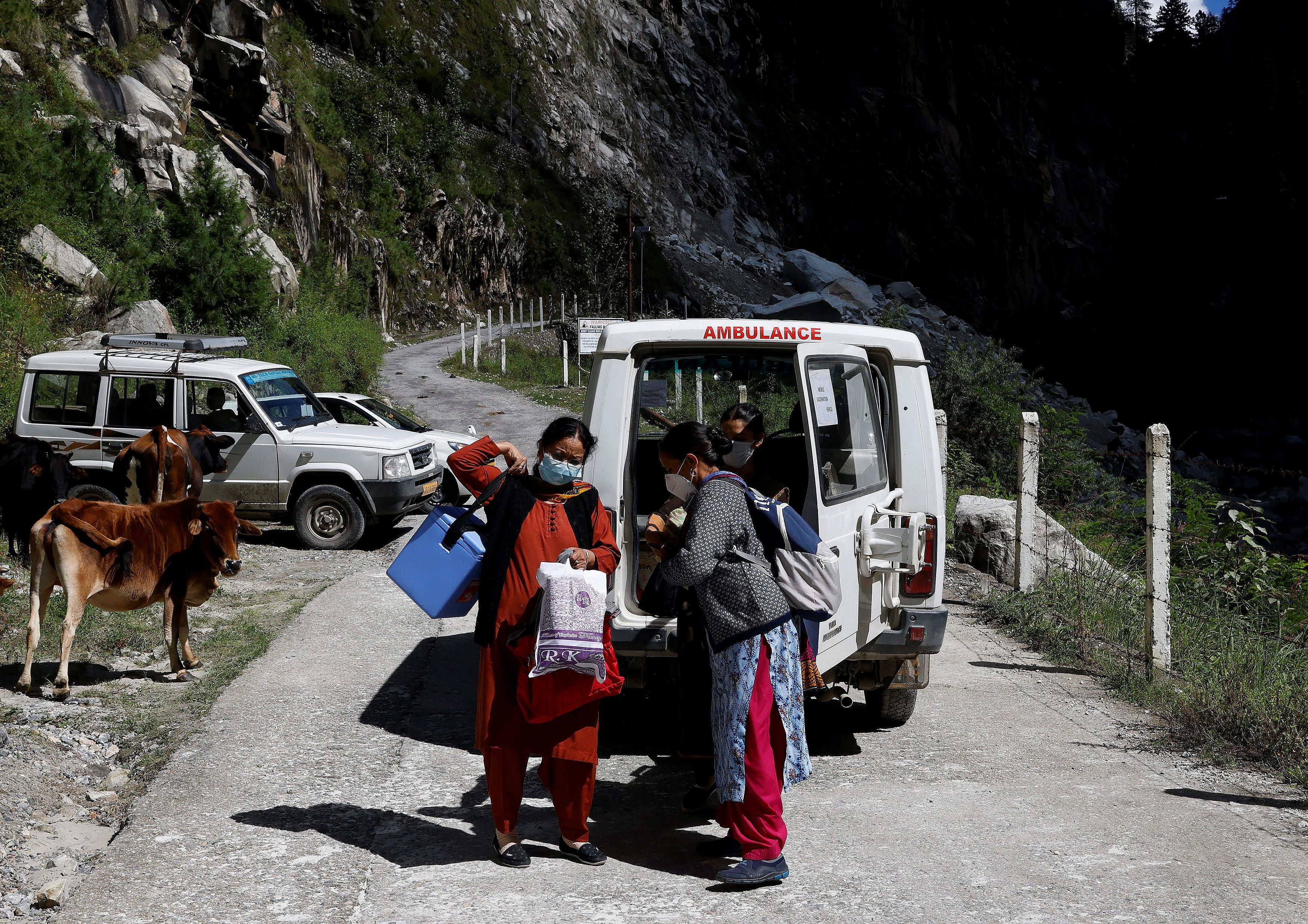
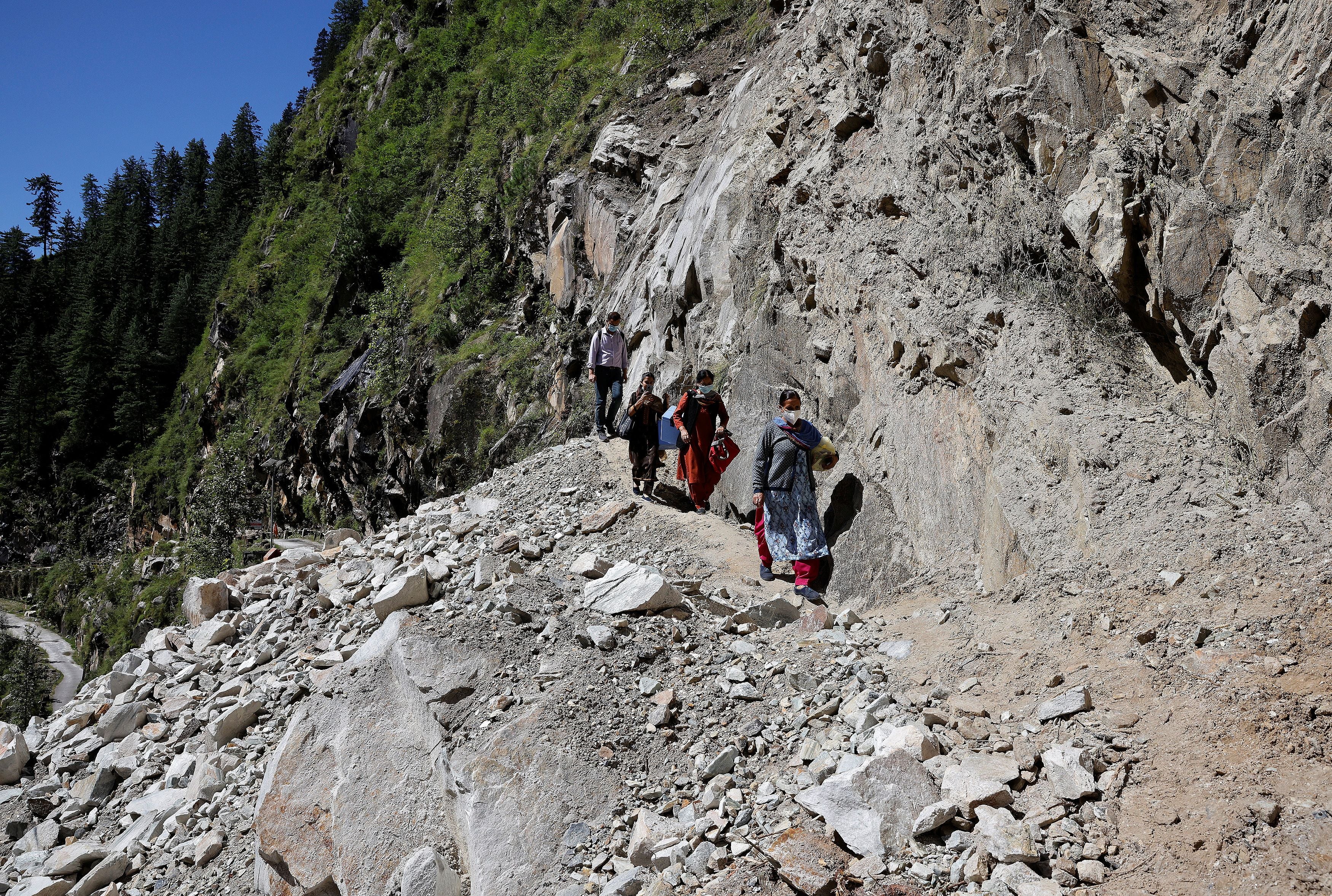
In September, a team of five led by district health officer Dr Atul Gupta set out on the path to Malana to administer second vaccine doses.
Blocked by the landslide, they left their vehicle with two blue vaccine boxes slung over their shoulders to manoeuvre over the rubble, climb the wall and then walk to the trailhead leading to the village, accompanied by a Reuters photographer.
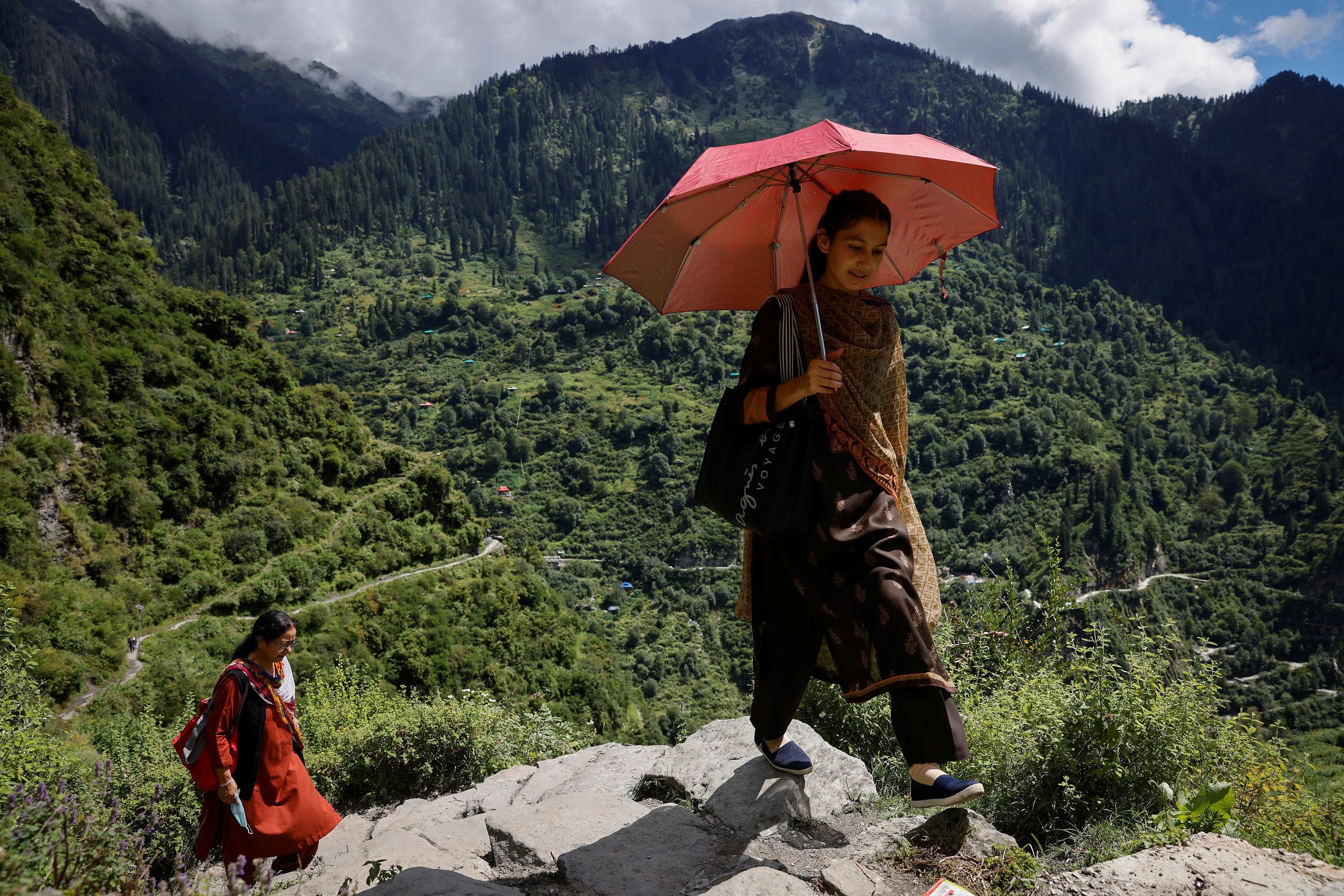
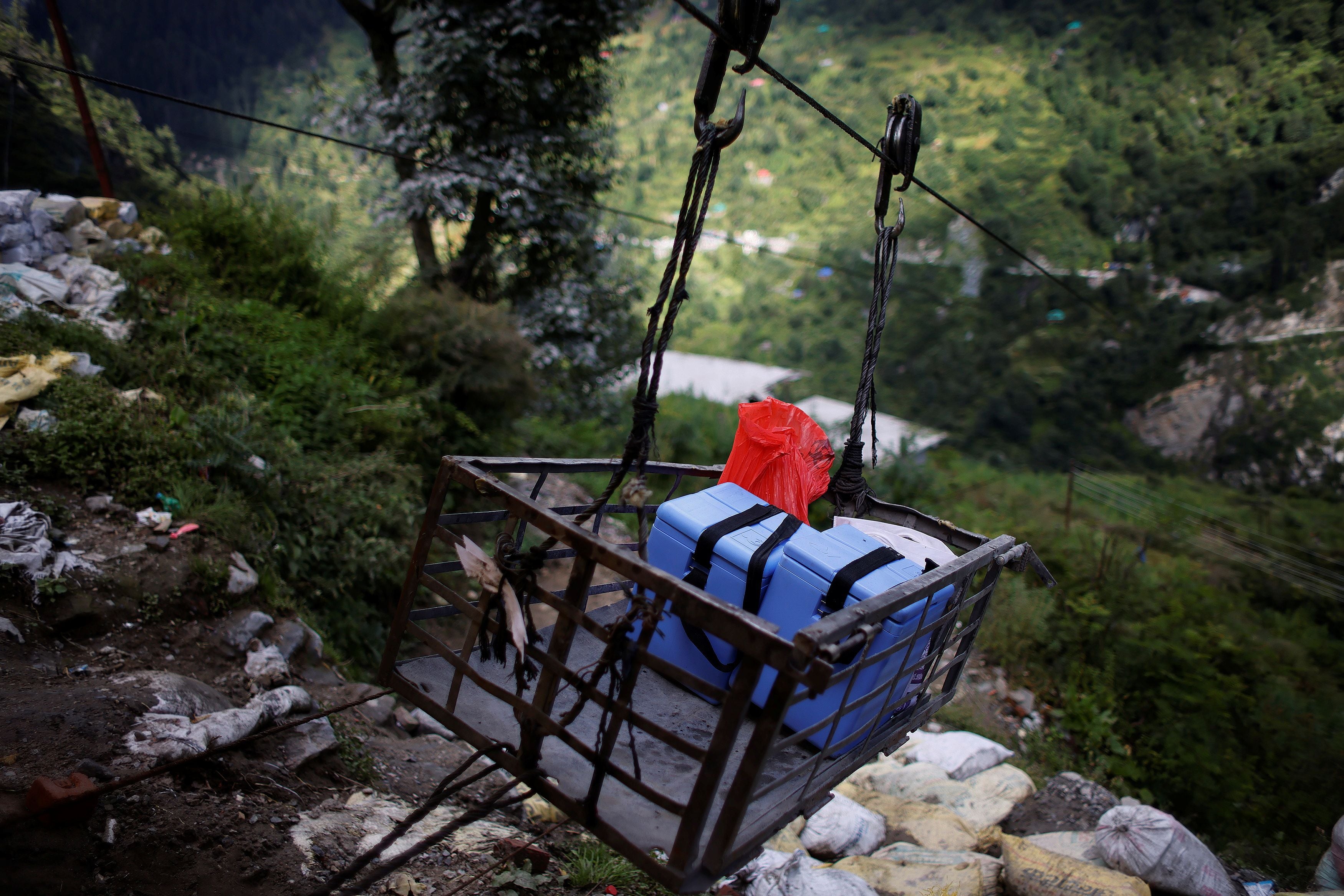
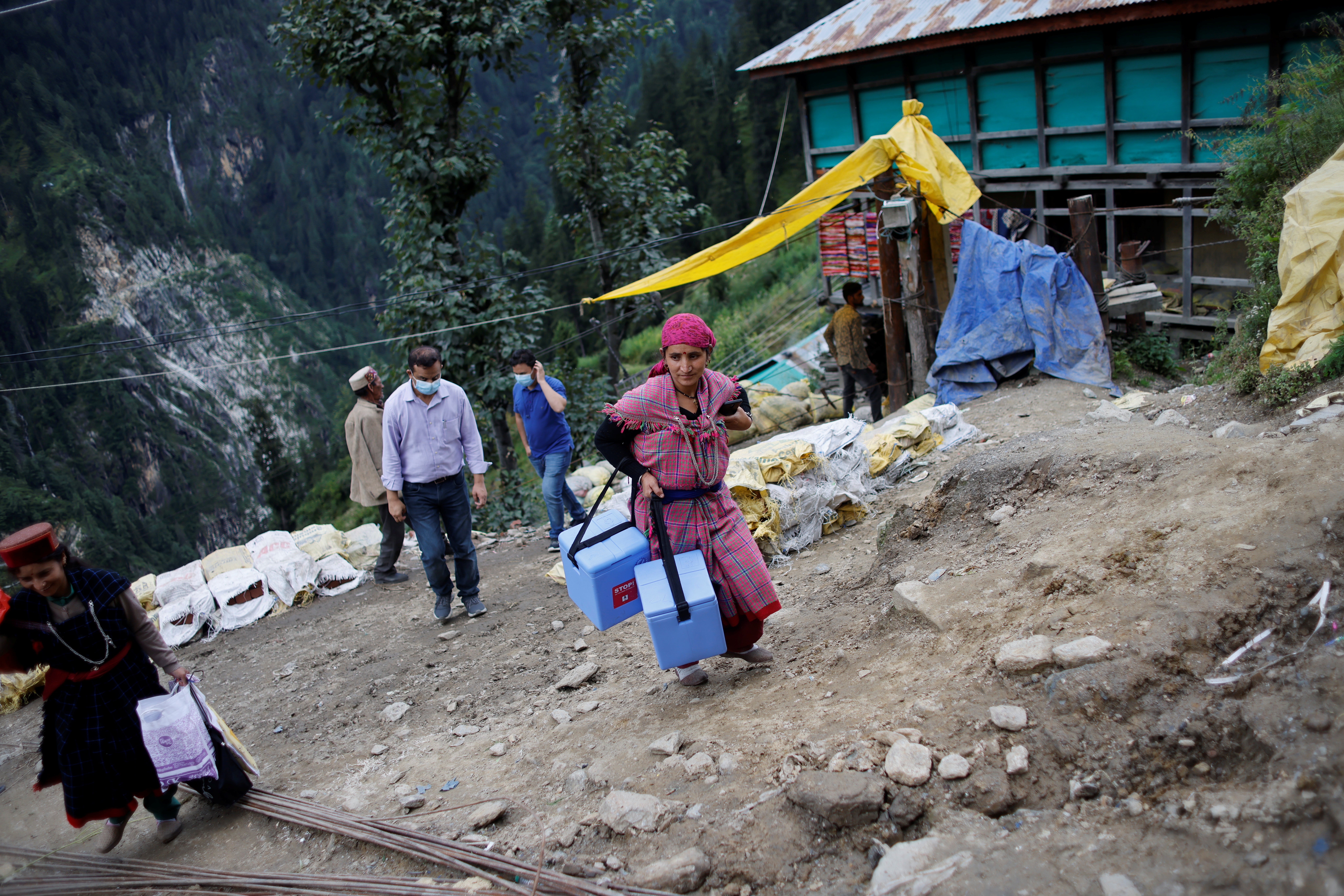
Before beginning the trek to the village, Gupta and his team placed the boxes onto a gondola connected to pulleys to carry the medicine across the river gorge that separates Malana from the road. That lightened their walk considerably as they set off to cross the gorge which drops down about 100m.
During a rest break on the trek, Gupta said that to convince Malana’s 1,100 adults to take their first shots, its district chief had priests invoke a local Hindu deity. This helped health workers give jabs to 700 people in three days, he said.
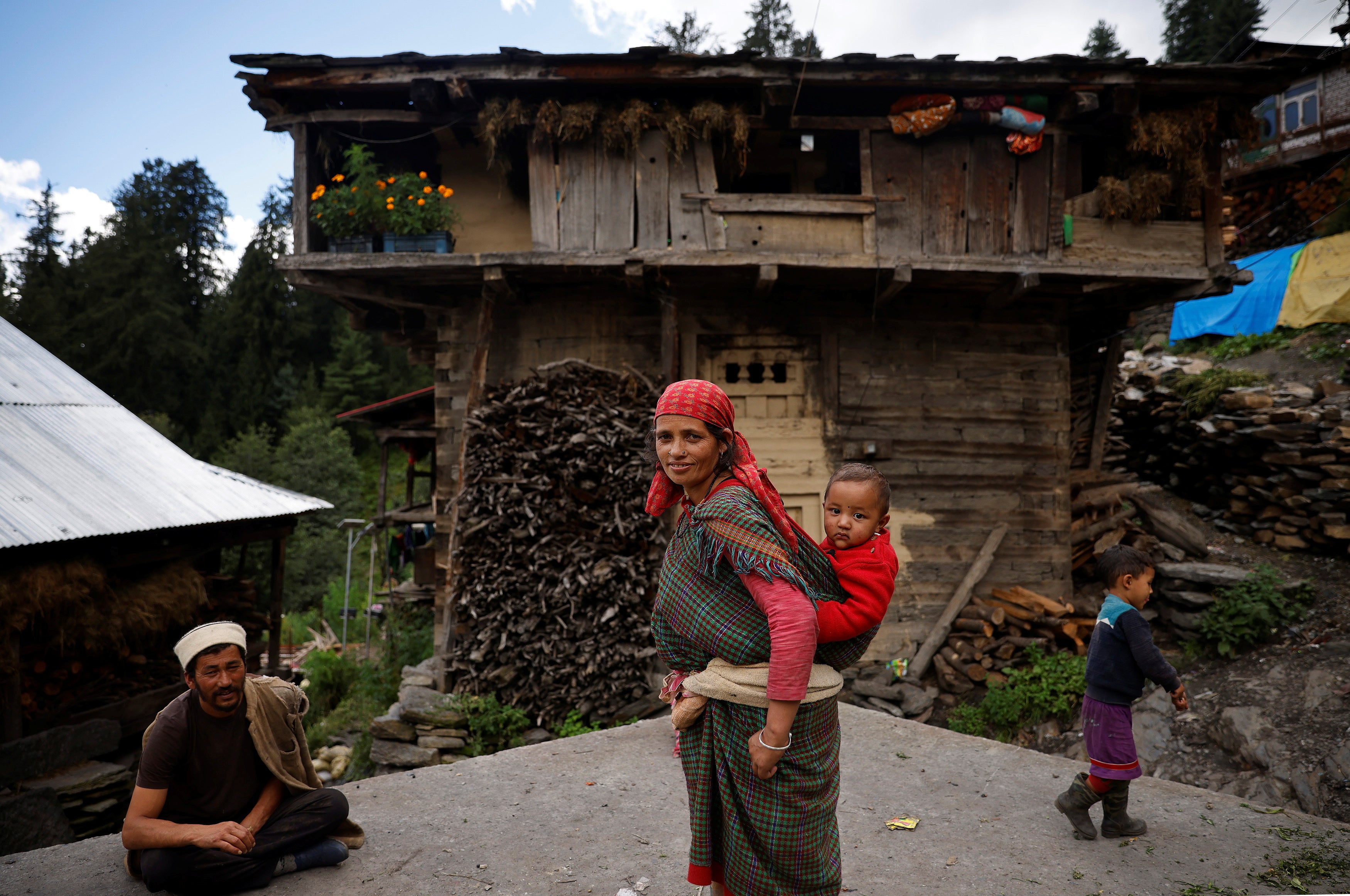
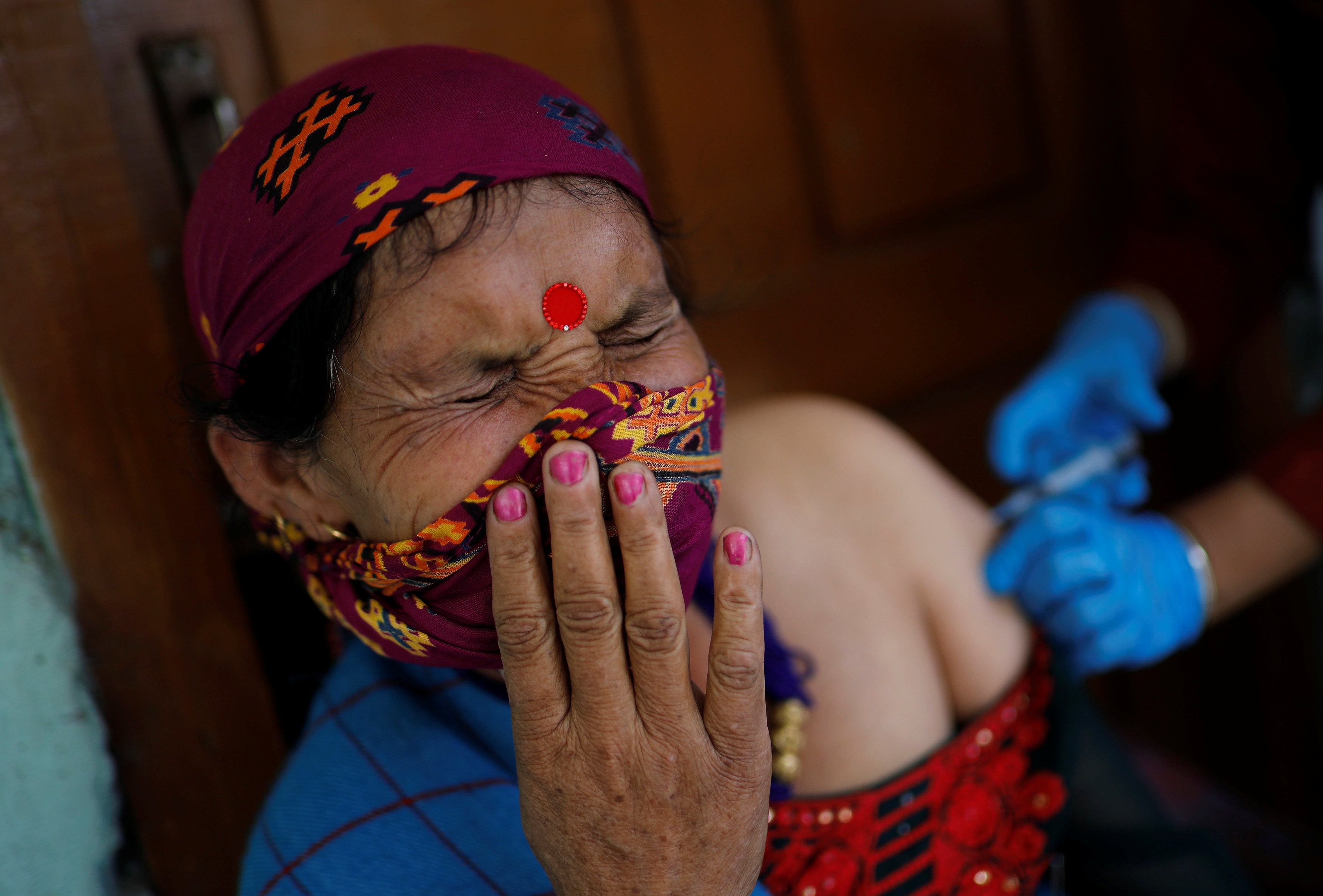
When Gupta’s team reached the village nearly three dozen people lined up to get their second shots just opposite an ancient temple to the deity.
“People were initially scared to take the vaccine, worried they would fall sick or die,” said village head Rajuram, who gave just one name, sitting by the carved wood and concrete walls of the temple. “Then I took it and others also mustered the courage.”
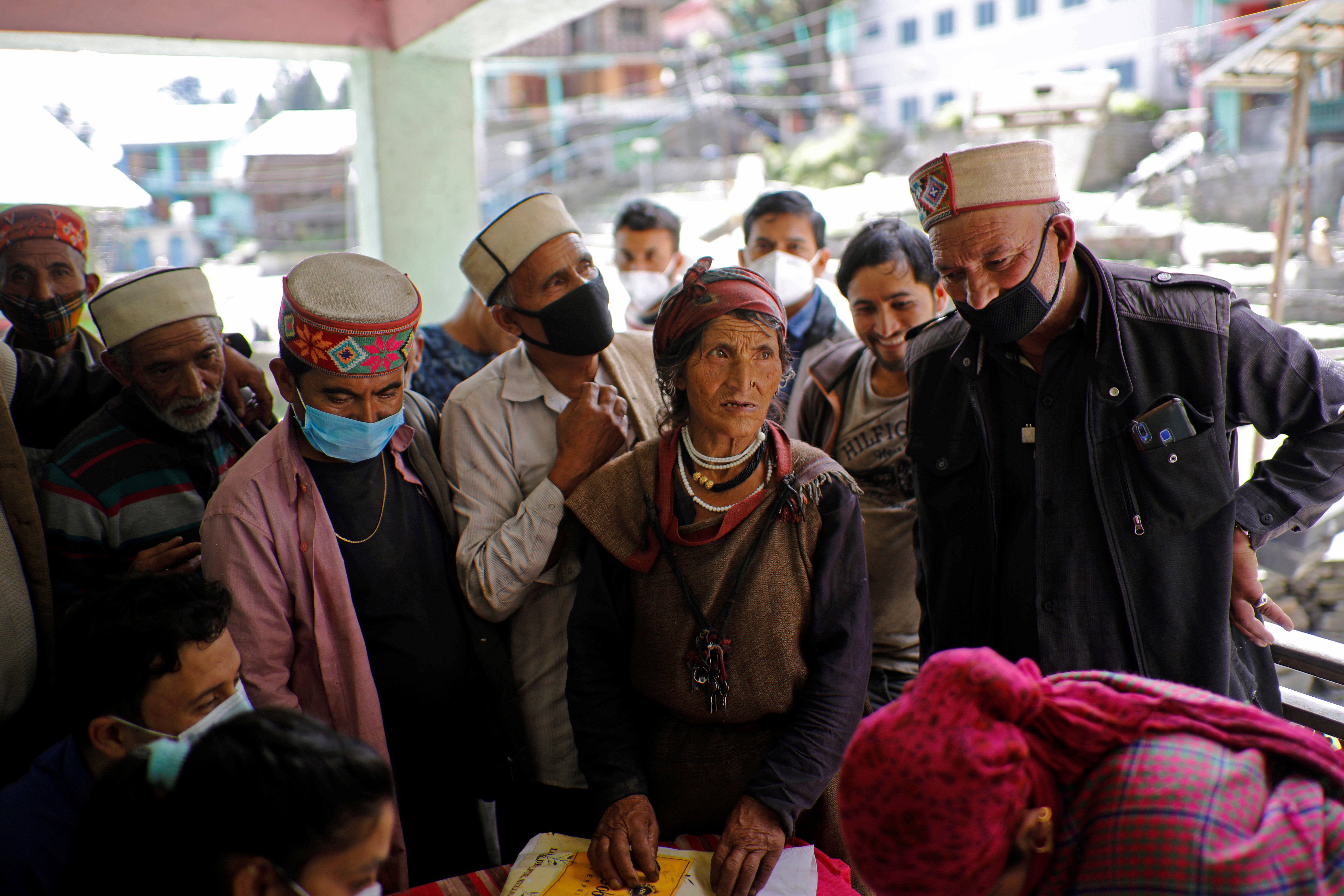
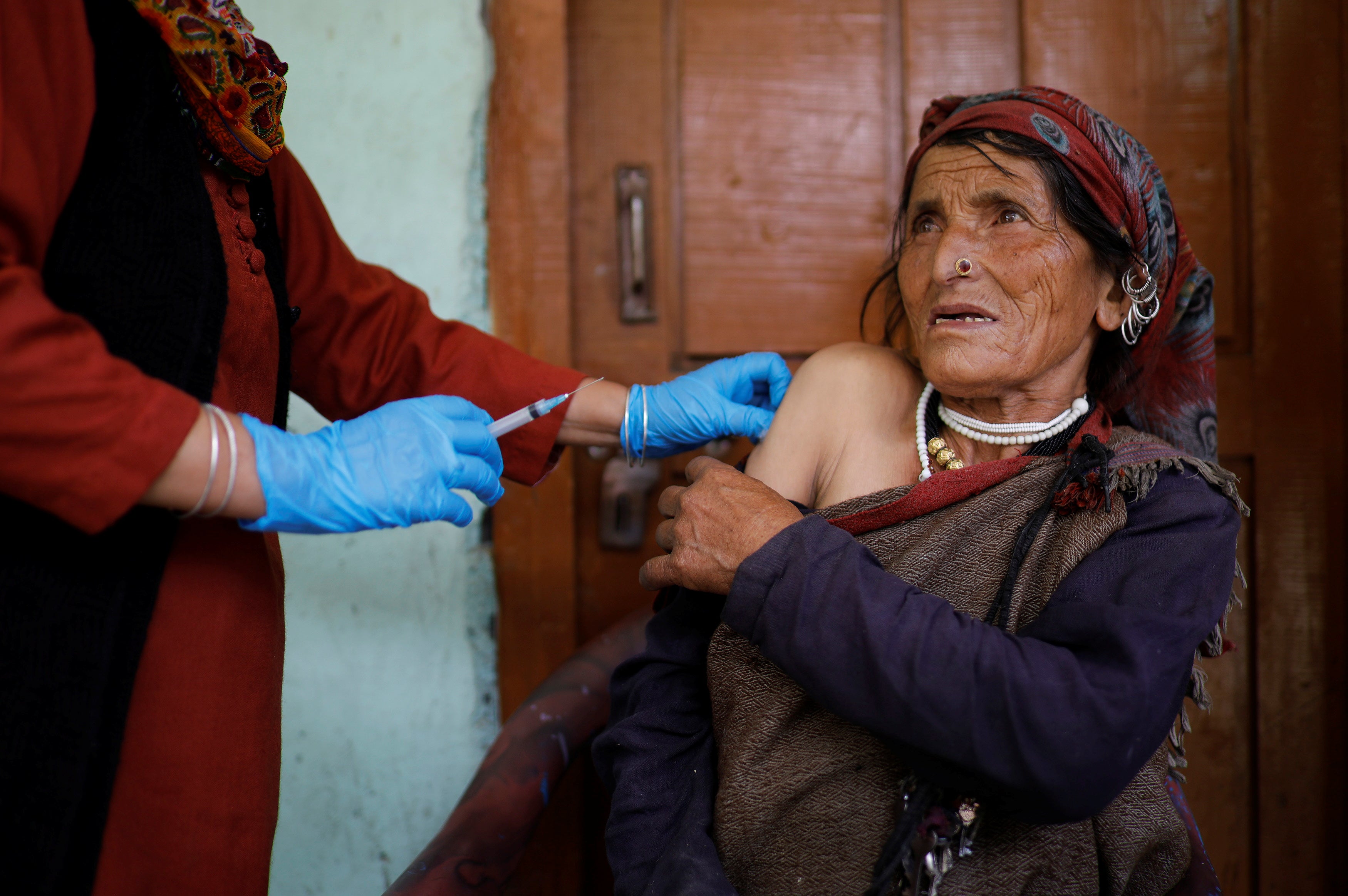
Himachal Pradesh’s chief minister Jai Ram Thakur attributes the state’s vaccination success to this village-to-village drive, its decision to involve local-level politicians and the federal government’s push to prioritise immunisations in tourist hotspots.
India wants to vaccinate nearly all of its adults by December, having administered at least one dose to two-thirds of people and two doses in fewer than a quarter. Thakur wants Himachal Pradesh to be the fastest state to reach the two-dose milestone, with November the target.
Reuters
Join our commenting forum
Join thought-provoking conversations, follow other Independent readers and see their replies
Comments